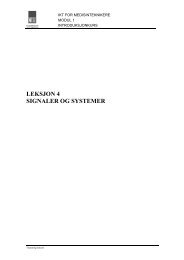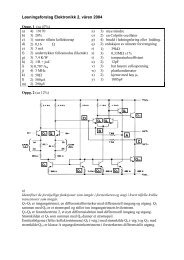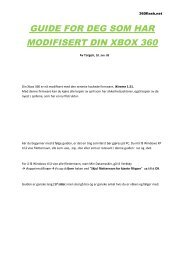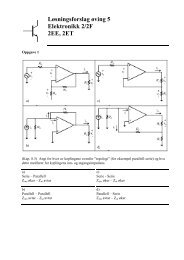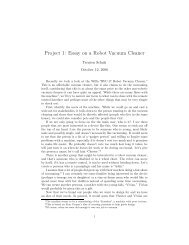The Online World resources handbook
The Online World resources handbook
The Online World resources handbook
You also want an ePaper? Increase the reach of your titles
YUMPU automatically turns print PDFs into web optimized ePapers that Google loves.
Your first trip online. Typical pitfalls and simple solutions http://home.eunet.no/~presno/bok/v3.html<br />
local disk."<br />
You are downloading, when you call a bulletin board to retrieve a program.<br />
When you, overwhelmed by gratitude, send one of your favorite programs back TO the<br />
bulletin board, we call it uploading.<br />
Data can be many things. It may be news from the Washington Post, a digital picture, an<br />
executable program, a pile of invoices, a piece of music, a voice file, an animated<br />
sequence of pictures and music, or compressed library files.<br />
Downloading "plain text" (also called "plain ASCII" or "DOS text" on MS DOS<br />
machines) is relatively easy. Such text usually only contains characters between number<br />
32 (space character) and 126 (the ~ character) in the ASCII table.<br />
Characters with lower numbers have special functions (like the control characters<br />
ESCape and CTRL+C). <strong>The</strong>se may not even be displayed on your screen. Characters<br />
with higher numbers are used for graphics, special national characters, and other<br />
applications.<br />
Special transfer methods are often required, when your data contains text with<br />
characters outside ASCII number 32 through 126. Read under "Protocol transfers"<br />
below for more information about how to do this.<br />
Downloading text<br />
Most communication programs require that you begin by opening a file. <strong>The</strong>y ask you to<br />
enter a file name. From this point and onwards all incoming text will be stored in this file<br />
until you say stop.<br />
Communication programs do this in different ways. Some let incoming data flow through<br />
a temporary storage area using the principle first in, first out. When you open a file, it<br />
starts storing data from the beginning of the temporary storage area, though this text<br />
may have scrolled off your screen some time ago.<br />
Most communication programs start storing data from NOW. Procomm works this way.<br />
You start downloading of text by pressing the PgDn key. A window will appear on your<br />
screen giving you a choice between various methods. Select ASCII.<br />
In another window, you are asked to enter a file name. When done, storage of incoming<br />
data starts. You stop the process by pressing the ESC key.<br />
Procomm has another method called "file logging." You start this by pressing ALT F1.<br />
Procomm requests the file name, and the storage process starts. (Read under "Strip"<br />
about the difference between these methods.)<br />
If you forget to tell Procomm to store incoming data, then you will most<br />
probably lose this data for ever.<br />
Do not waste time and money by forgetting to store what you receive!<br />
<strong>The</strong> term "append"<br />
When downloading text or anything you must know whether you are appending<br />
information to an existing file, or overwriting it (that is, destroying the old text).<br />
Most communication programs complain with an audible signal, when you try to<br />
overwrite an existing file. <strong>The</strong>y will ask you if you really want to delete it, or append the<br />
current data.<br />
9 of 14 23.11.2009 15:50





